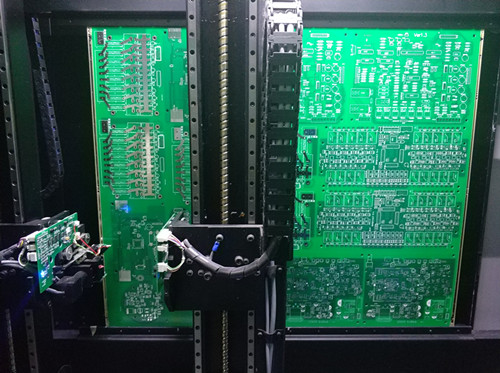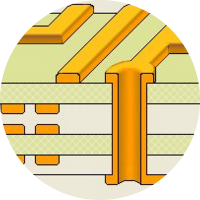Blog > Detail
Soldering overview: reflow, wave and hand soldering
Time: 2020-12-03 View: 4145
There are three different ways that we solder electronic components to printed circuit boards. We’ll talk about three different forms of solder and three forms of flux-a material that removes any oxidation and prepares the metal areas to be bonded.
The first technique is called reflow. It is used for surface mount technology(or SMT) components. For this, we use solder paste- a paste of flux with tiny balls of solder suspended in it. The paste is applied to the board with a stencil and the components are stuck into the paste using a robotic pick-and-place system. Then the PCB board goes into the reflow oven. This is a convection oven with multiple different temperature zones inside. In the oven the board is slowly heated and the flux goes to work until the solder beads melt and flow into place then cool and solidify. To do a double-sided SMT board, you do one side and then flip it over and repeat the process. On the second pass we don’t let the bottom side get quite as hot, but the solder will flow again so experience board designers know to put all the heavier components on the “Top” side as a matter of design for manufacturing.
The second technique is wave solder where we have a wave of molten solder for boards to pass through. This is used for through-hole and mixed technology boards. As boards go in, the underside is sprayed with flux and as the board travels through the machine it is slowly heated and the flux mostly evaporates before the board passes through the molten solder wave-actually several different kinds of controlled waves- to completely fill in all areas of the board. For double-sided boards to be wave soldered you place the SMT components first, on one side, using glue to hold them in place and then place the through-hole components on the other side. The SMT components go through on the underside and get soldered in the wave along with the through-hole pins.
Finally some components are best hand soldered. The flux is usually in the core of the solder wire. We hand solder components like lithium batteries that can’t go in the ovens or tall, tippy parts.
For more information about soldering, please contact us at service@PCBbee.com, we will response within 2 hours!
The first technique is called reflow. It is used for surface mount technology(or SMT) components. For this, we use solder paste- a paste of flux with tiny balls of solder suspended in it. The paste is applied to the board with a stencil and the components are stuck into the paste using a robotic pick-and-place system. Then the PCB board goes into the reflow oven. This is a convection oven with multiple different temperature zones inside. In the oven the board is slowly heated and the flux goes to work until the solder beads melt and flow into place then cool and solidify. To do a double-sided SMT board, you do one side and then flip it over and repeat the process. On the second pass we don’t let the bottom side get quite as hot, but the solder will flow again so experience board designers know to put all the heavier components on the “Top” side as a matter of design for manufacturing.
The second technique is wave solder where we have a wave of molten solder for boards to pass through. This is used for through-hole and mixed technology boards. As boards go in, the underside is sprayed with flux and as the board travels through the machine it is slowly heated and the flux mostly evaporates before the board passes through the molten solder wave-actually several different kinds of controlled waves- to completely fill in all areas of the board. For double-sided boards to be wave soldered you place the SMT components first, on one side, using glue to hold them in place and then place the through-hole components on the other side. The SMT components go through on the underside and get soldered in the wave along with the through-hole pins.
Finally some components are best hand soldered. The flux is usually in the core of the solder wire. We hand solder components like lithium batteries that can’t go in the ovens or tall, tippy parts.
For more information about soldering, please contact us at service@PCBbee.com, we will response within 2 hours!
 Sign In
Sign In Join Free
Join Free



